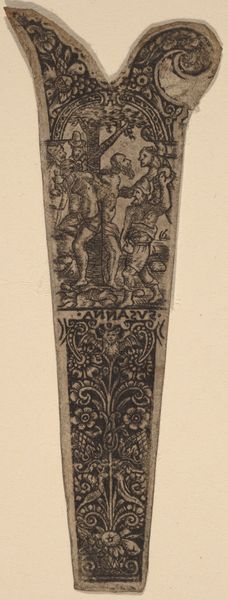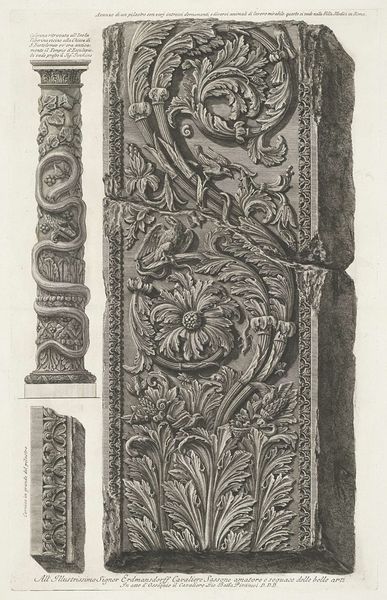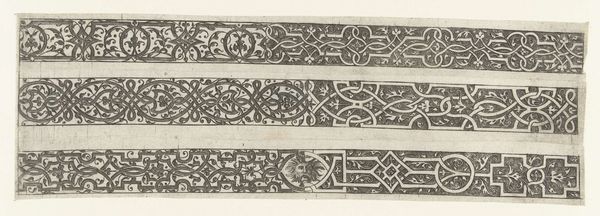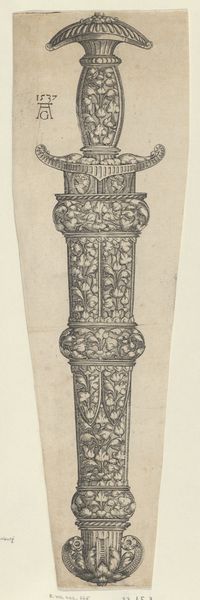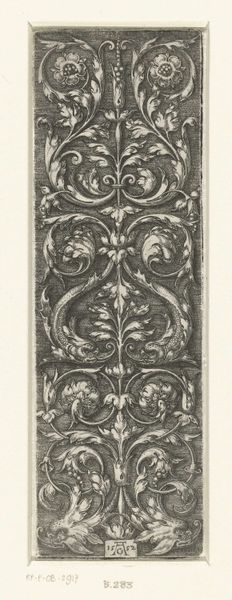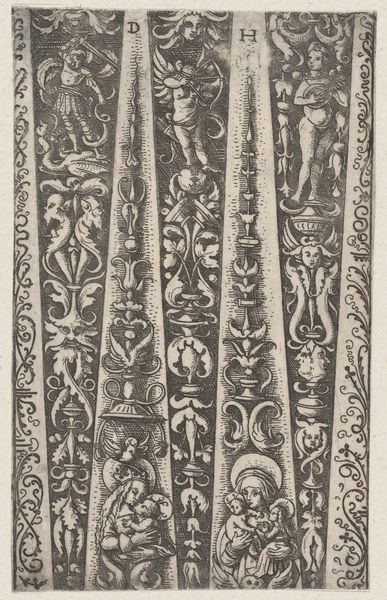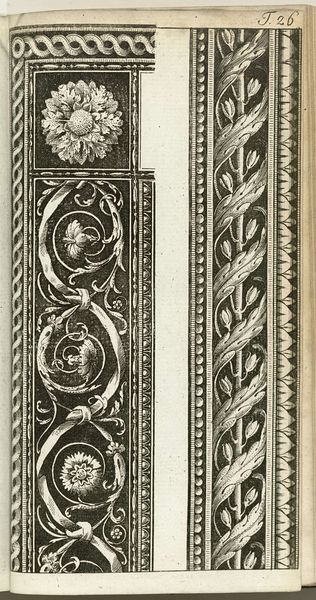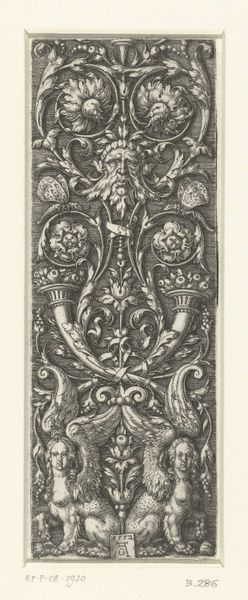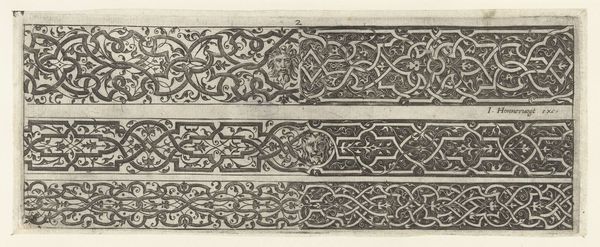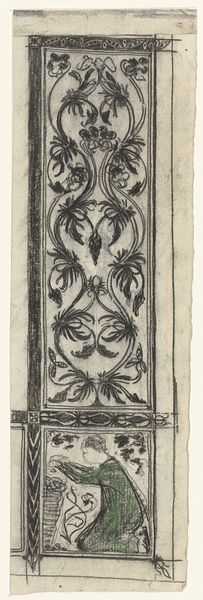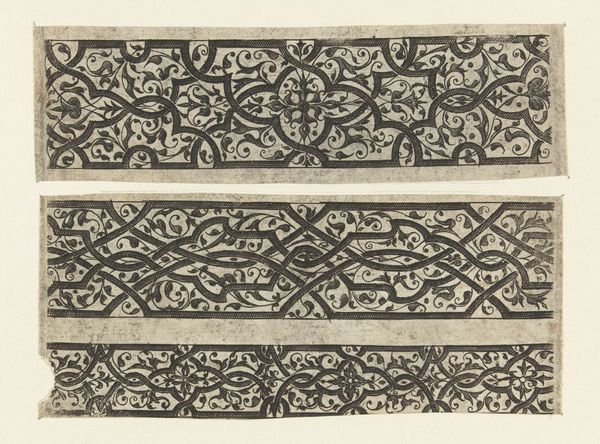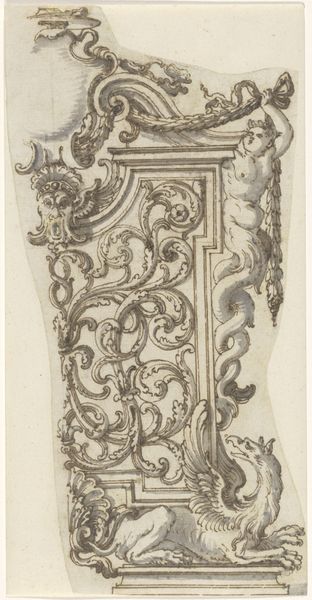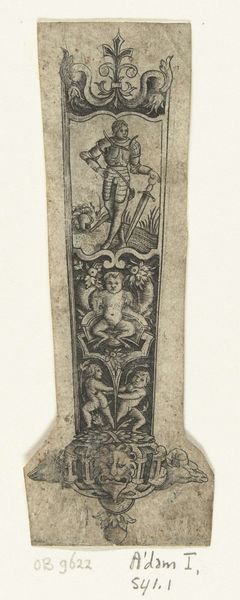
drawing, ornament, print, intaglio, engraving
#
drawing
#
ornament
# print
#
intaglio
#
old engraving style
#
figuration
#
11_renaissance
#
pencil drawing
#
engraving
Dimensions: height 109 mm, width 42 mm, width 26 mm
Copyright: Rijks Museum: Open Domain
Editor: This is "Two Ornaments with Putti and Foliage" from between 1520 and 1562, made by the Monogrammist AC. It's an engraving. I'm struck by the density of the composition, how every space is filled with intricate detail. What compositional structures jump out at you? Curator: The engraving showcases a mastery of line and form. The composition is clearly divided into two distinct panels, each a vertical exploration of ornamental motifs. Consider the interplay between positive and negative space – the densely worked areas against the stark background. The balance achieved is notable. Notice also the organization around a central vertical axis in each panel, contributing to a sense of order and harmony despite the density. How do you perceive the proportional relationships between the figures and the decorative elements? Editor: The figures seem secondary, almost swallowed by the foliage. It's as though the ornament is the main subject. Curator: Precisely. The human form serves as an integral component of the overall design, subordinated to the overarching decorative scheme. We see here how line weight dictates the focal point, moving between organic shapes. This subordination reflects a key tenet of Renaissance ornamentation. Editor: So, it's not necessarily about storytelling, but about the arrangement of shapes and forms within the boundaries of the image? Curator: Yes, the purpose is largely aesthetic. While we might infer some cultural meanings associated with putti or foliage, the artwork functions primarily as a formal exercise in design. Editor: I'm beginning to see how understanding the visual components and their relationship creates a language in itself. Thank you. Curator: Indeed, and studying pieces like these enables you to decode larger meanings conveyed through purely formal means.
Comments
No comments
Be the first to comment and join the conversation on the ultimate creative platform.
